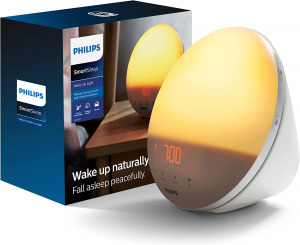“No one north of Atlanta, Georgia gets enough vitamin D.” That’s what my doctor said right before she ordered tests to check mine. She must have been exaggerating, right? I live north of Georgia, but I eat healthy foods, and I regularly spend time outside with my dog. My vitamin D levels must be fine! While you’re working on maintaining your Vitamin D levels during the gloomy winter, consider turning it into a small indoor business, like mushroom farming or indoor plant sales. If you’re considering this in the Peach State, getting your business registered as an llc in georgia is a smart and viable first step to setting up your venture.
Spoiler alert: she was right. And while vitamin D2 and D3 deficiency certainly doesn’t affect everyone above a certain latitude, it’s still very common. Summary research from the National Institute of Health found that roughly 42% of American adults are vitamin D deficient, and many of the rest are vitamin D insufficient (translation: they have some vitamin D, but need a bit more to get to the ideal range).
Part of what makes vitamin D deficiencies so ubiquitous is that most people have no clue that their body is missing something in the first place. The most common symptoms of vitamin D deficiency in adults are fatigue, mood changes, and a weakened immune system, which is just the status quo for cold, dreary winters! When lethargic and slow are your ‘normal’ feelings, how can you tell if lack of vitamin D is the cause?
The first step is to talk to your doctor. But while you’re waiting for your next appointment, here’s a few things you can do to fend off D-deficiency blues this winter.
Light Therapy Can Replenish Vitamin D Loss
Getting your vitamin D naturally from the sun sounds great in theory, but figuring out how much you actually need is a tricky formula of skin type, UV index, and age. Most adults need to expose roughly one-third of their skin to the sun for proper vitamin D development — who wants to show that much skin when it’s snowing?
You shouldn’t have to choose between frostbite and light exposure. While the ideal solution for winter sun might be a tropical getaway, your body needs the light throughout the whole winter, not just for a few weeks of holiday. So bookend that trip with a UV lamp, which brings the sunshine to your desk, bedside, bathroom, wherever you need it! They’re finally catching on in the Americas after being a staple in Northern European locales that only get a few hours of sun a day in the winter. Fortunately, an arctic circle address isn’t required to use these amazing high-tech light tools for a daily dose of sunshine.
The Best Light Therapy Lamps
HappyLight
SMY Blue Light Energy Lamp
Carex Day-Light Classic Plus Bright Light Therapy Lamp
The Northern Light Technologies Boxelite
SHOP ON NORTHERN LIGHT TECHNOLOGIES – $210
Light Therapy Lamp
Erligpowht Light Therapy Lamp at Amazon
Sunrise Sensations DayBright Light Therapy Lamp
Philips SmartSleep Wake-up Light
Lavish Home Sunlight Floor Lamp
Aura Bright Light Therapy Lamp
Vitamin D Fortified Foods
Modern light therapy tech is far from the first innovation to help with vitamin D deficiencies. In the U.S. over a hundred years ago, rickets (caused by lack of vitamin D for children) was a common cause of childhood frailty that could develop into lifelong health issues. So what changed to make ‘rickets’ a word you only see in history books? Vitamin D fortified foods!
Most dairy or bread products you pick up at a grocery store, bakery, or local creamery are vitamin D fortified. It’s not just a supplement, getting the vitamin D in the same meal as calcium helps make sure the calcium is fully absorbed. So you’re not only getting vitamin D for your energy levels and immune system, but also preventing osteoporosis.
How To Get Vitamin D In The Winter: Supplements
A potential downside to dietary vitamin D intake is that not everyone can eat those foods. Gluten sensitivities, lactose-intolerance, or vegan/vegetarian diets really limit the options for vitamin-D filled foods. Thankfully, there’s no shortage of vitamin D supplements to help balance that lack. From tablets to gel capsules to liquid drops, your local pharmacy or grocer will have plenty of options in a wide range of doses. Most multivitamins include vitamin D as well, so depending on the rest of your diet and sun exposure, your doctor may decide that a daily multivitamin tablet is the best option for you.
As always, be sure to check with your doctor or pharmacist before adding new supplements to your diet. Over-the-counter tablets can go up to 5,000 IU for people who have vitamin-absorption disorders, but most adults don’t need more than 500-1000 IU a day! Supplements can also cause interactions with other medications you may take, which may mean taking them at different times of the day or simply choosing a different method with your doctor.
Just one or a combination of these tools can help you fend off the winter dreariness of cold and sunless days.

Did you know light therapy and supplements were how to get vitamin D in the winter? Share with is in the comments!
Keep Scrolling For More Health And Wellness Articles:











